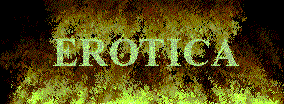 In Japanese
In Japanese
Education in Canada

Introduction
Canada is a confederation of ten provinces and three territories—a vast country stretching across North America from the Atlantic Ocean to the Pacific Ocean and north to the Arctic Ocean.
Under Canadian constitutional arrangements, the provinces and territories have responsibility for education. As a result, Canada has no national or federal department of education. Although there are a great many similarities in the 13 education systems across Canada, each reflects the diversity of its own regional history, culture, and geography.

In 1967, the Council of Ministers of Education, Canada (CMEC) was formed to act as the national voice of education in Canada. CMEC is the forum in which the provincial and territorial ministers meet to discuss matters of mutual interest. CMEC is also the body that represents the education interests of the provinces and territories in working with national education organizations, the federal government, foreign governments, and international organizations.
 Canada has two official languages: English and French. English is the primary language for approximately three-quarters of the population, with French the primary language for the remainder.
Canada has two official languages: English and French. English is the primary language for approximately three-quarters of the population, with French the primary language for the remainder.
Most French speakers (francophones) live in Quebec where they form a majority. There are also French minority groups in all parts of Canada, the largest concentrations being in New Brunswick, Ontario, and Manitoba. Minority language education in Canada (English or French) is guaranteed wherever numbers warrant.
Public Education
 Kindergarten to grade 12 education is publicly funded and free to all Canadian citizens and permanent residents until the end of secondary school — normally, age 18.
Kindergarten to grade 12 education is publicly funded and free to all Canadian citizens and permanent residents until the end of secondary school — normally, age 18.
In Quebec, college level education in the Cégeps (collèges d'enseignement général et professionnel) is also free to Quebec residents, but tuition is charged for university education. All other Canadian students pay tuition fees to attend colleges and universities.
Mandatory school age, or compulsory schooling, varies across Canada, but is generally between ages 5-7 and 16-18. The school year for K-12 schools is normally September to June; however, a few school authorities begin their school year earlier or operate year-round.
At the local level, public education comes under the authority of school boards. These local school authorities operate under different names — school boards, school districts, school divisions, and, in the case of New Brunswick, District Education Councils.
The powers and duties of these school authorities are defined in provincial or territorial statutes and are generally consistent throughout Canada. The governing body of these school authorities consists of school trustees who are elected to office in public elections.
Elementary / Secondary
Education (K-12)
 Preschool programs or kindergartens, operated by local school authorities, provide pre-elementary education for 4-5 year-olds. Kindergarten programs are offered in elementary schools in all provinces and territories. Elementary education in most provinces and territories covers the first 6 or 8 years of compulsory schooling.
Preschool programs or kindergartens, operated by local school authorities, provide pre-elementary education for 4-5 year-olds. Kindergarten programs are offered in elementary schools in all provinces and territories. Elementary education in most provinces and territories covers the first 6 or 8 years of compulsory schooling.
Grade organization varies among the ministries / departments of education. In some areas, it involves kindergarten to grade 8 (elementary grades) and grades 9 to 12 (secondary level). Most school systems have an intermediate level of school — junior high school or middle school.
Following elementary or middle school, children proceed to secondary school (also called high school or senior high school) where they continue to grade 12 (grade 11 in Quebec). Curriculum programs at the secondary level include both academic and vocational programs.
The academic program provides students with the credits necessary to meet the entrance requirements of universities and colleges. The vocational program prepares students with the credits necessary to continue their studies at a postsecondary college, or to enter the job market.
Secondary school diplomas are granted to students who pass the compulsory and optional courses of their programs — academic or vocational.
Postsecondary Education
(Colleges & Universities)
 Postsecondary education in Canada, both university and college levels, is also the responsibility of the provincial and territorial governments. Those governments provide most of the funding for their public postsecondary institutions. Additional funding comes from the federal government, research grants, and student tuition fees.
Postsecondary education in Canada, both university and college levels, is also the responsibility of the provincial and territorial governments. Those governments provide most of the funding for their public postsecondary institutions. Additional funding comes from the federal government, research grants, and student tuition fees.
Virtually all postsecondary institutions in Canada have the authority, by charter or local legislation, to grant academic credentials. Generally speaking, universities are the degree-granting institutions — offering undergraduate degrees (bachelor's and honours) and graduate degrees (master's degrees and doctorats).
Colleges offer vocationally-oriented programs of study leading to certificates and diplomas, although a few applied arts degrees are granted that are equivalent to, or lead to the university level. In general, the postsecondary school year begins in September and continues to the end of April or early May, although some institutions operate on a year-round semester system.
Postsecondary education in Quebec begins with the Cégep system (collèges d'enseignement général et professionnel), following graduation from grade 11. Students take a 2- or 3-year general program (leading to university admission), or a professional program in preparation for the labour force.
Private Schools & Career Colleges
Canada has a large number of private or independent schools (some of which are religious in orientation) and private career colleges. Private schools and colleges may operate in any province or territory if they meet the general standards prescribed by that government authority.
Although they may closely follow the curriculum and diploma requirements of the department or ministry of education, they function independently of the public school system and charge fees. Five provinces — Alberta, British Columbia, Manitoba, Quebec, and Saskatchewan — provide some form of financial assistance to those schools.
Private colleges do not receive funding support from provincial or territorial governments unless they are affiliated with a public institution.







